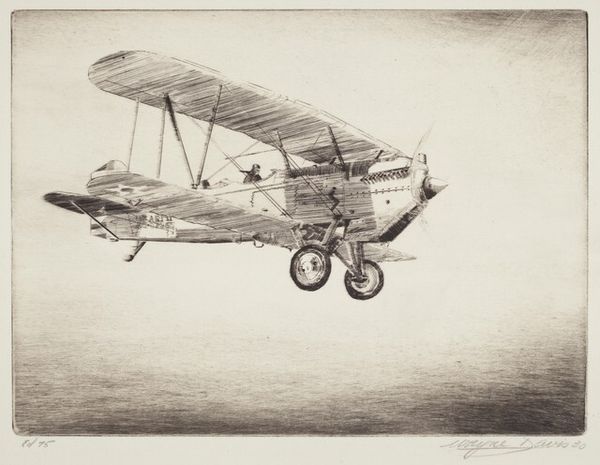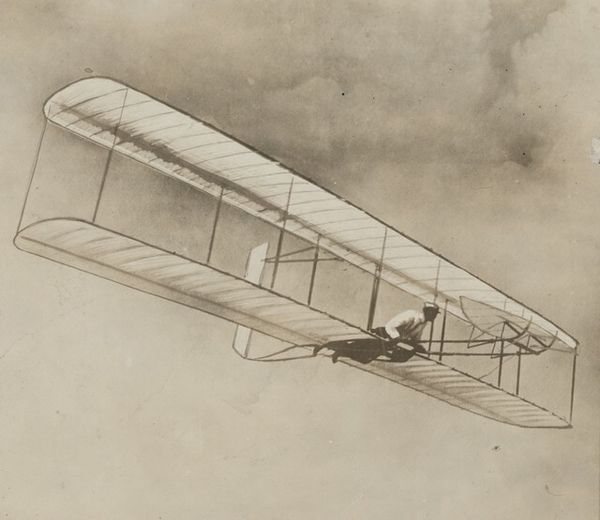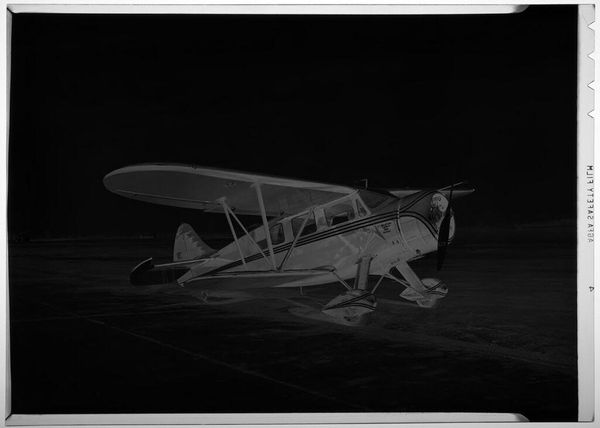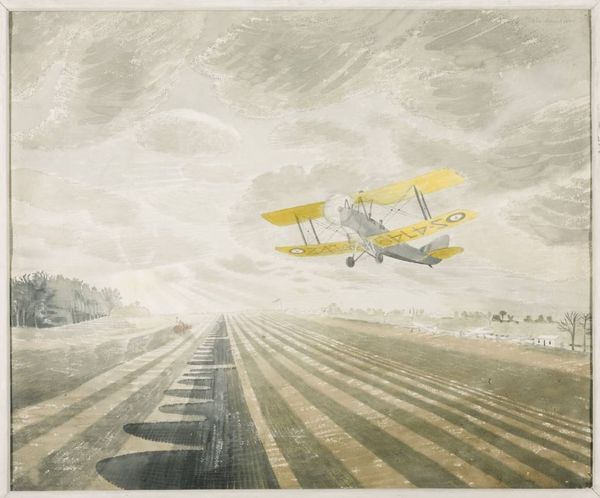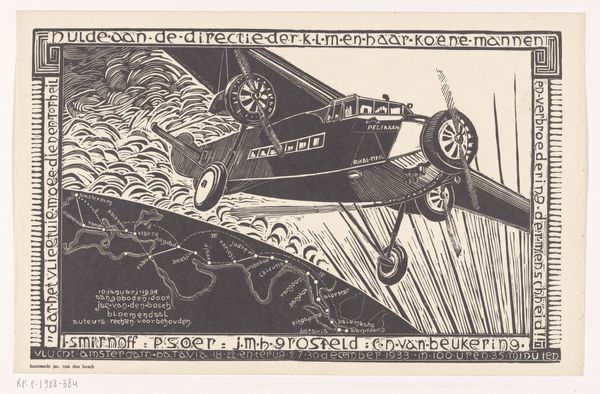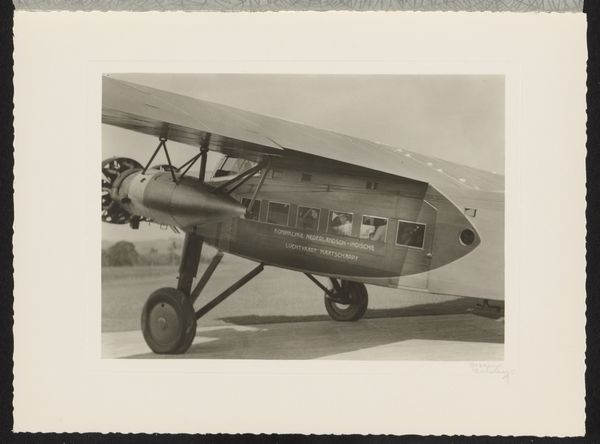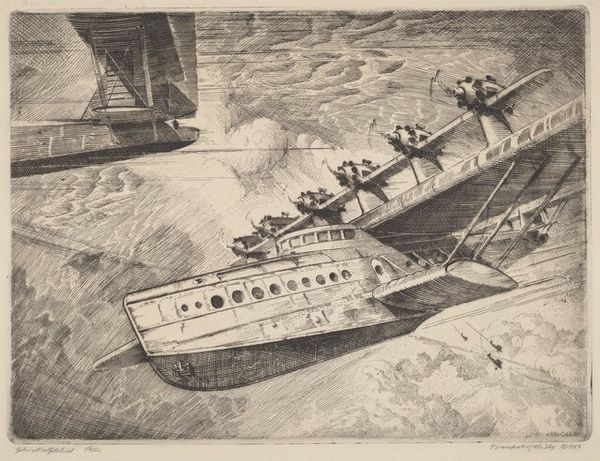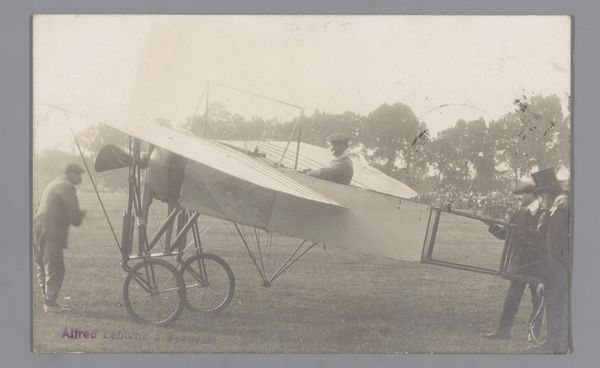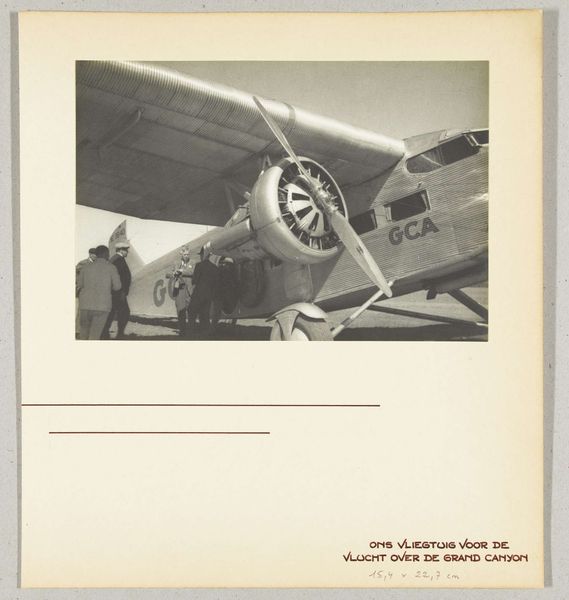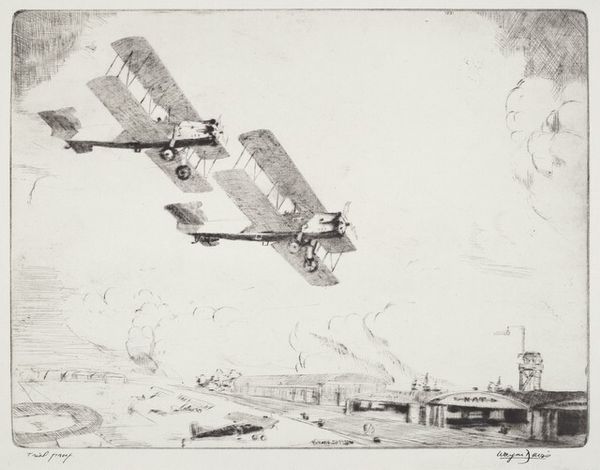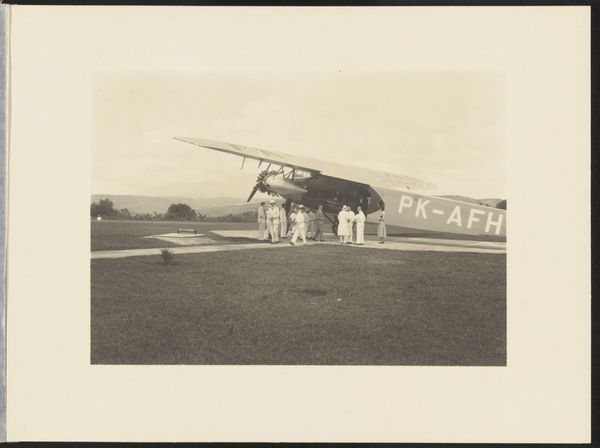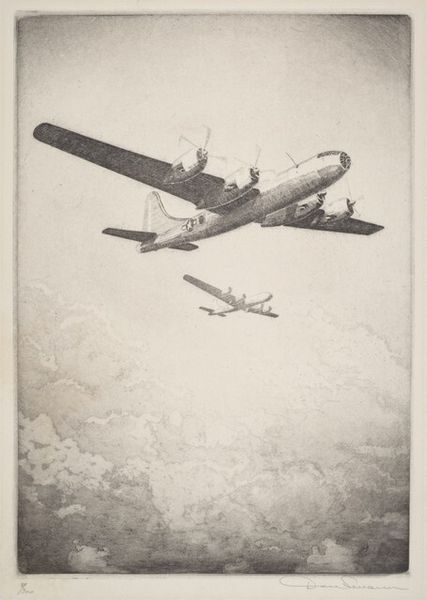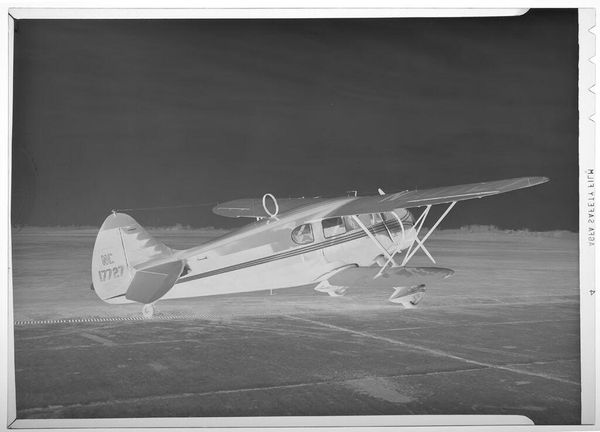
lithograph, print
#
lithograph
# print
#
pencil sketch
#
landscape
#
geometric
#
modernism
#
realism
Copyright: National Gallery of Art: CC0 1.0
Editor: This is Joseph Pennell’s lithograph, "The Big Bug," from 1916. It depicts an airplane inside a hangar, and what immediately strikes me is how meticulously Pennell renders the mechanical details. What do you make of it? Curator: It's interesting to consider the title. "The Big Bug." Not exactly a romantic description, is it? This period witnessed a massive shift in attitudes toward machines, from objects of wonder to instruments of war. Given that it’s a lithograph, how does its accessibility influence your perception of its message during the First World War? Editor: Good point. Being a print, it would be more widely distributed than, say, an oil painting. So, was Pennell perhaps making a statement about the industrialization of warfare and the accessibility of such technology at that time? Curator: Precisely. Consider the hangar itself. Its construction reflects the industrial methods rapidly being adopted and standardized. Lithography itself, a process reliant on industrial methods for mass production, reinforces this theme. Can you sense the process of making such artwork and how it’s inextricably tied to the message? Editor: Definitely. The printmaking process becomes part of the artwork's statement. It is not just an image of a machine, but a machine-made image of a machine! Curator: Right. The availability of this imagery shaped public opinion and acceptance of aerial warfare. Pennell gives us not just a representation, but the material embodiment of the era’s complex relationship with technology. It is about accessibility and manufacturing of war! Editor: Thinking about the material processes adds so much to my understanding. Thank you for sharing your insight. I will think about all these materials in their historical and production context from now on!
Comments
No comments
Be the first to comment and join the conversation on the ultimate creative platform.
